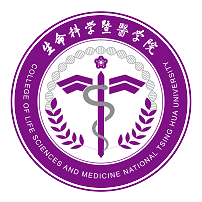

During the twentieth century, Life Science became a popular area of study, one whose research yielded some of the most important applications for humans all over the world. The native biological functions of proteins, translated from their corresponding genes, are still largely unknown despite a huge number of gene sequences having been decoded up to this point. As a result, the Structural Biology Program was organized by the College of Life Science at NTHU, in collaboration with the Academia Sinica and National Synchrotron Radiation Research Center, for cultivating and training talented scientists in the wealth of proteomics research that has followed the sprouting of the genomic fields.
The Structural Biology Program is an applied science, consisting of chemistry, physics, biology and bioinformatics among others. Biophysical methods (NMR, X-ray diffraction and mass spectrometry, etc.) are the most common research tools that we use to determine the three-dimensional structure of macromolecules accurately, up to atomic-scale resolution, in order to explore the structure-function relationship of biological molecules and the further application to drug design. The cooperation of computational and multifaceted biological training allows us to analyze biological data. For example, the development of genomic and proteomic studies are based on the information provided by protein structures and their corresponding DNA sequences.
While most research in the post-genomic era deals with Genomics, Proteomics, Metabolomics and Lipidomics, structural biology has shown to be crucial not only in designing effective drugs based on the information and research provided by these fields, but also in the exploration of molecular evolution, systems and other important issues. As a result, a strong understanding of this area is necessary to provide students a basic and applied level of scientific training.
The function of a biological molecule can be comprehensively understood by the aid of computer simulation and analysis of biological information, each of which provides direct experimental evidence between the function and corresponding three-dimensional structure of the biological molecule. Thus, the goals of this program are to develop scientists with multidisciplinary structure-function knowledge, to provide a program which integrates modern biology and physics, and to solve the structures of macromolecules based on state-of-the-art techniques, thus understanding their function at the cellular and molecular levels.
Website: 結構生物學程 (nthu.edu.tw)